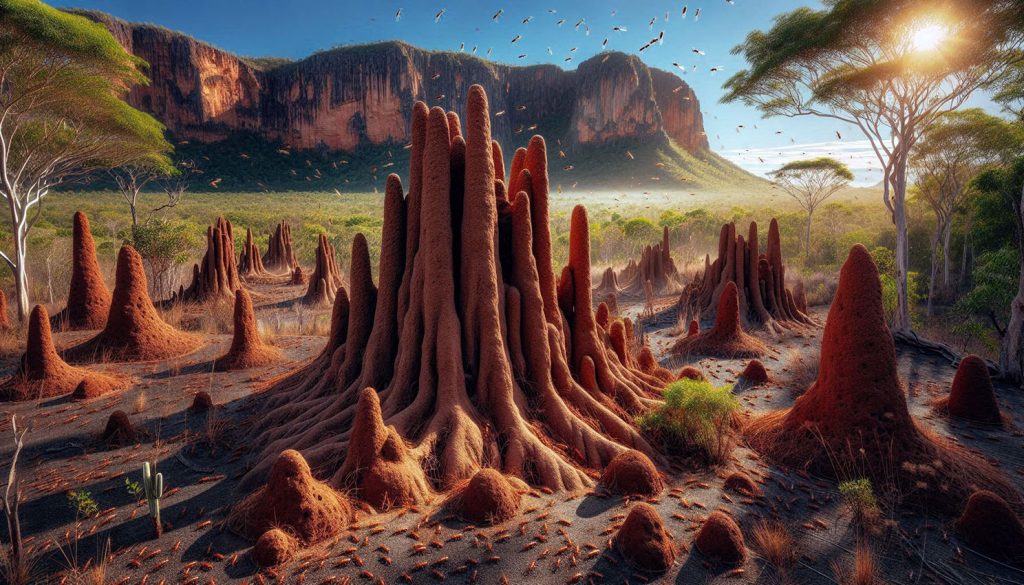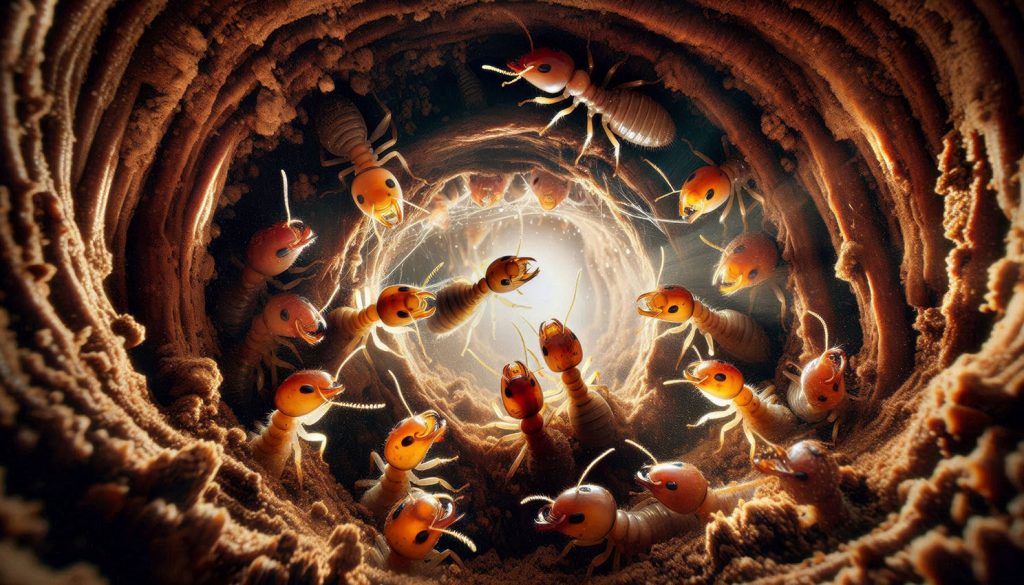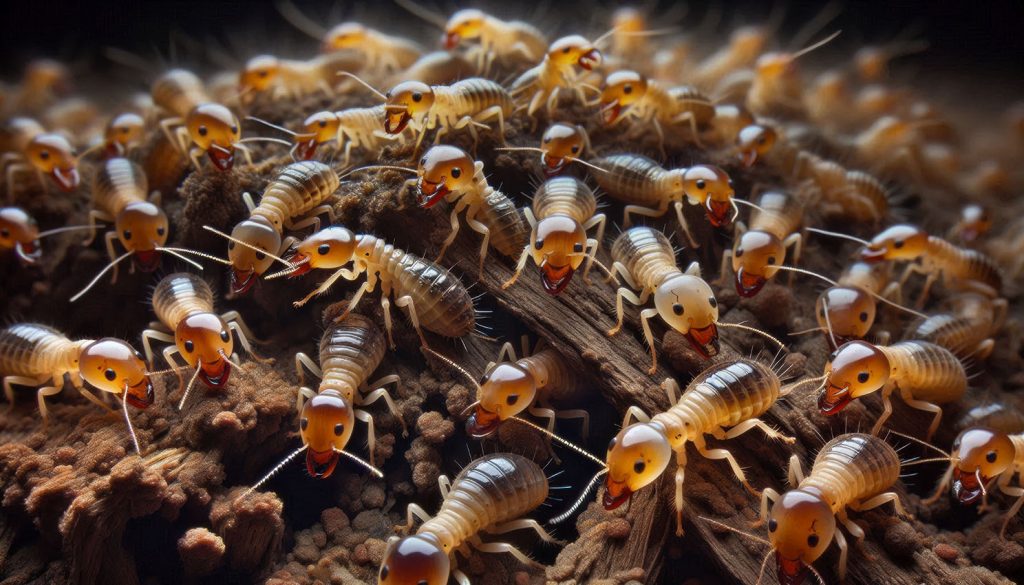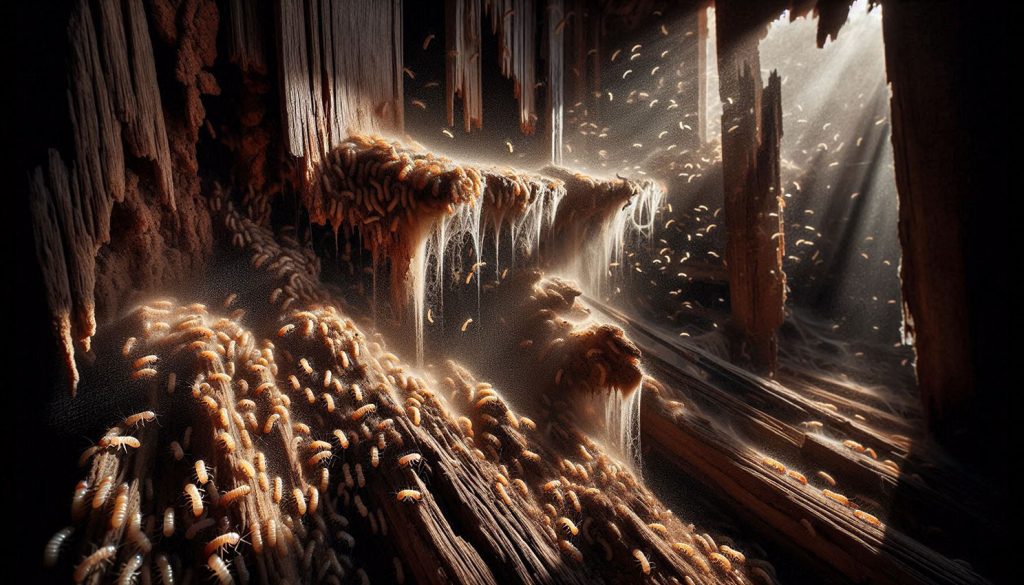Australia – Munga-Thirri and Queensland
Don Rowlands OAM and Dr Nick Sidle

Digital illustration
Termite, Subterranean

Digital illustration – Termite Mound
Termites are a very important part of an ecosystem, they break down dead wood and other organic matter releasing nutrients and recycling carbon and nitrogen, both essential for plant growth. Termites are known to particularly accelerate decomposition during droughts, partly offsetting the negative effect of water scarcity. By tunnelling in the soil, they distribute nutrients, water and produce aeration.

Digital illustration – Subterranean Termites – Coptotermes acinaciformis
Their mounds can be valuable habitats in their own right, benefitting the smallest microbes right up to reptiles and small mammals. They are now acknowledged to directly enhance plant growth and forest regeneration, they have even been confirmed in some cases as increasing crop yields.

Digital illustration – Subterranean Termites – Coptotermes acinaciformis
Termites are a vital component in the functions and cycles of the natural world. If they were removed from it the effects would be devastating. Unfortunately, outside the natural world it is their presence that can be just as devastating. Wood in houses and buildings is, in a botanical sense, dead. The termites have evolved to deal with that, to them it is a job to do and a call to action, it needs to be broken down and fed back into growth. The damage can be enormous, they can also locally severely harm crops and agriculture. Only a small minority of species are true pests but they can bring very real destruction.

Digital illustration – Termite damage to buildings
To date, this has been an issue mostly in the tropics but with rising temperatures across the world, there are real questions about an increase in their range. New places will have to answer questions around termites in future years, and new places will need the ecological advantages they bring.
University of Michigan – Termites may have a larger role in future ecosystems
To balance the vital role of termites with protecting the things they can damage will depend on understanding and knowing them better. We need to look at the science that is already known, to push the boundaries of knowledge with new research but we also need to listen to older cultures that have seen Termites in their place and understood that they make a huge contribution to life. They are also quite good at life themselves. Normally, the lifespan of small insects is brutally short. Termite workers and soldiers live one to two years, a long time for an insect of their size but the lifespan of the queen is measured in decades, a typical queen lives for 25 to 50 years, 100 years has even been reported, the longest known life for any insect.

Digital illustration – Termite Mound
Text ©The Authors, all rights reserved
Photographs and illustrations ©Nick Sidle, all rights reserved